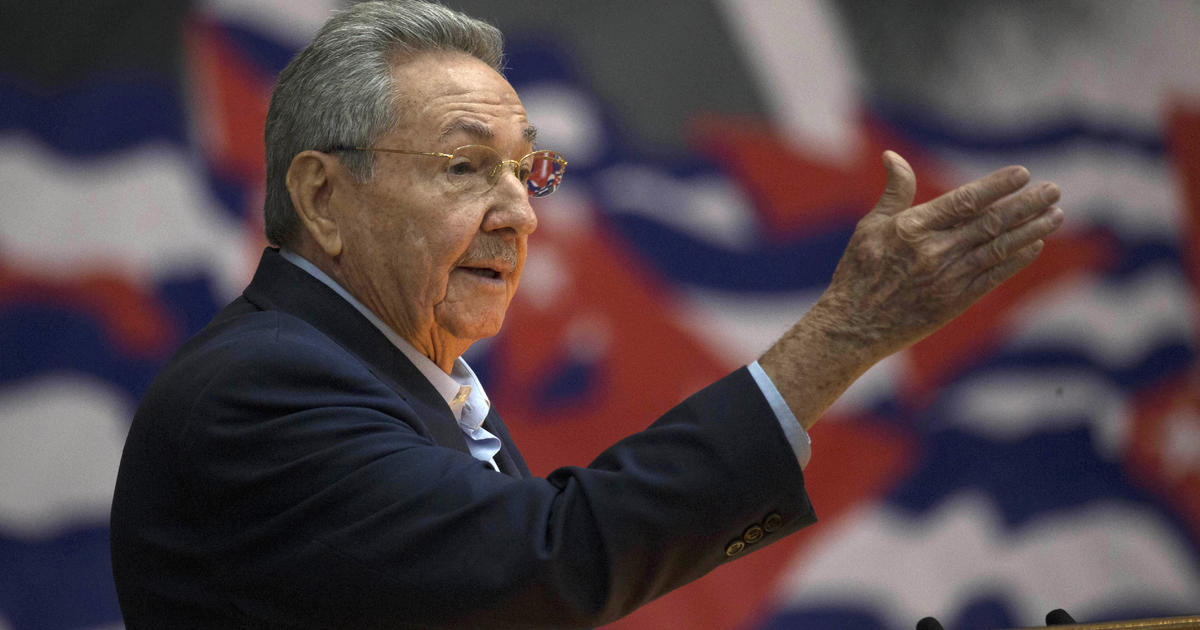
Raúl Castro said on Friday that he is resigning as leader of the Communist Party of Cuba, ending an era of leadership that began with his brother Fidel and the country’s revolution of 1959. Castro, 89, made the announcement in a speech at the opening of the eighth congress of the ruling party, the only one allowed on the island.
He said he was retiring with the feeling that he had “fulfilled his mission and trusted the future of the homeland.”
“Nothing, nothing, nothing forces me to make that decision,” Castro said in his speech to the Closed Congress, part of which aired on state television. “As long as I live I will be prepared with my foot in the stirrup to defend the homeland, the revolution and socialism more strongly than ever.”
Castro did not say who he would support as his successor as first secretary of the Communist Party. But he previously indicated that he favors ceding control to Miguel Díaz-Canel, 60, who succeeded him as president in 2018 and is the bearer of the younger generation of loyalists who have been pushing for economic openness without touching Cuba’s single party system.
Photographs published by the official Cuban news agency showed Castro, dressed in an olive green uniform, entering the compound with Díaz-Canel by his side.
Castro’s retirement means that, for the first time in more than six decades, Cubans will not have a Castro who will formally guide their affairs. Many had been waiting for change.
“We need to take a step alongside young people,” said Juana Busutil, a 64-year-old retiree, for whom Castro “will continue to be the leader.”
The transition comes at a difficult time for Cuba, with many on the island anxious for what awaits us.
The coronavirus pandemic, painful financial reforms and restrictions imposed by the Trump administration have hit the economy, which fell 11% last year as a result of a collapse in tourism and remittances. . Long lines and food shortages have once again echoed the “special period” that followed the collapse of the Soviet Union in the early 1990s.
Discontent has been fueled by the spread of the Internet and growing inequality. Much of the debate within Cuba focuses on the pace of reform, and many complain that the so-called “historical generation” represented by Castro has been too slow to open up the economy.
In January, Diaz-Canel finally fired a plan approved two congresses ago to unify the island’s dual-currency system, leading to fears of inflation. It also opened the door to a wider range of private companies, a long-banned or tightly restricted category that allowed Cubans to legally operate many types of self-managed businesses from home.
This year’s Congress is expected to focus on unfinished reforms to review state-owned enterprises, attract foreign investment, and provide more legal protection to private business activities.
The Communist Party is made up of 700,000 activists and the constitution of Cuba has the task of directing the affairs of the nation and society.
Fidel Castro, who led the revolution that ousted dictator Fulgencio Batista in 1959, formally became party leader in 1965, about four years after officially embracing socialism.
He quickly absorbed the old party under his control and was the undisputed leader of the country until he fell ill in 2006. In 2008 he handed over the presidency to his younger brother Raúl, who had fought alongside him during the revolution.
Raul succeeded him as party leader in 2011. Fidel Castro died in 2016.
For most of his life, Raul played the second string with his brother Fidel, first as a guerrilla commander, then as a leading figure in his socialist government. But over the past decade, Raul has been the face of communist Cuba and its challenge to U.S. efforts to oust its socialist system.
The fourth of seven children of a Spanish immigrant in eastern Cuba, Raúl had joined his charismatic older brother in an almost suicidal attack on the Moncada military barracks in the eastern city of Santiago in 1953 and survived the repression that followed Batista’s forces.
He led a major front in the next guerrilla war led by Fidel, which overthrew Batista and later served as head of the armed forces. For many years, he was considered a more orthodox communist than his brother.
But it was Raul who reached agreements with U.S. President Barack Obama in 2014, which created the largest U.S. opening in Cuba since the early 1960s, leading to increased contacts. with the United States being largely invested by Obama’s successor, Donald Trump.
Now, with Raúl Castro stepping down as party leader amid changes and challenges, some say the island needs continuity in the future.
“All the processes have a continuity and I think Díaz-Canel should be there now,” said 58-year-old driver Miguel Rodríguez.